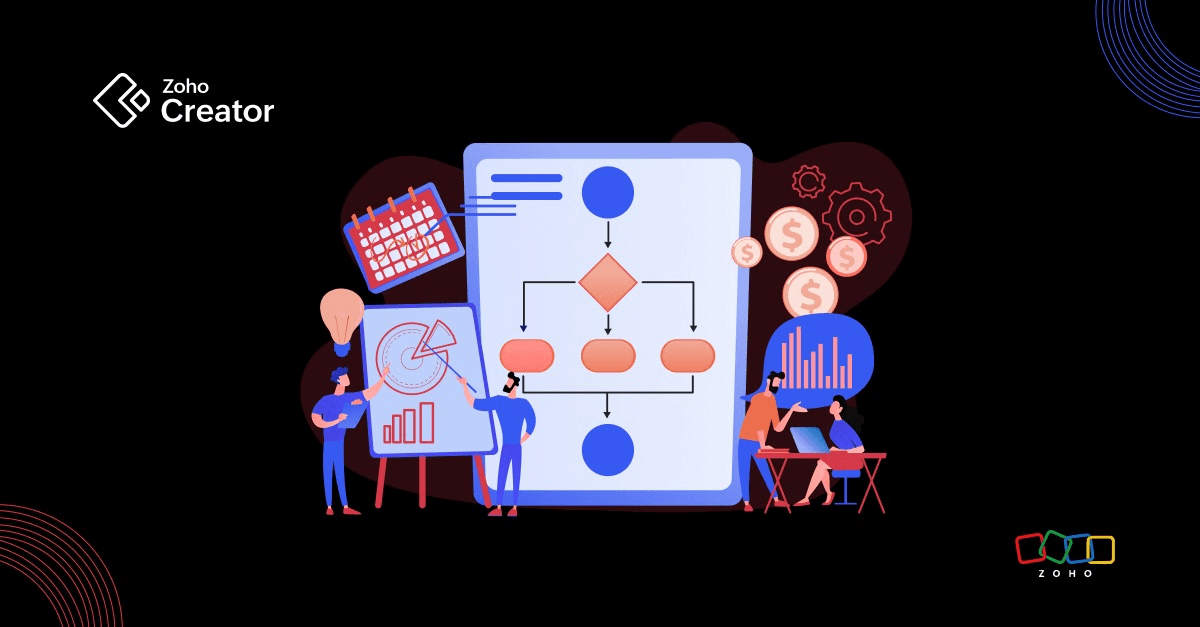- HOME
- Know Your Tech
- Setting business objectives for your bimodal IT program
Setting business objectives for your bimodal IT program
- Last Updated : April 20, 2023
- 380 Views
- 7 Min Read

Bimodal IT is the concept of two separate modes of operation for an organization's technology department. One mode is focused on stability and reliability while the other focuses on agility and speed to market. This bimodal approach has been found in large organizations that have a strong need to keep their existing systems running at all costs, but also want to be able to quickly adapt as needed for new projects. The challenge with this model is ensuring that both types of teams are working together towards a common goal, instead of against each other due to conflicting priorities.
The bimodal IT concept has been successful in getting senior executives to think about the implications of these two radically different types of business needs and challenges. Some benefits of the bimodal IT approach are:
It enables more holistic capital planning and avoids duplicated investments in system or process integration
Since it's based on two different technology approaches, there's also better alignment with business challenges
Bimodal IT has helped many organizations identify opportunities for re-platforming their legacy systems and adopting new technologies.
Traditionally, IT has focused on cost reduction for existing systems or process re-engineering, to enable digital business initiatives. These are important goals in their own right, but they don't necessarily translate into the desired outcome of driving digital business innovation.
Bimodal IT can help by providing a clear path for establishing project governance, incentives, business cases, and enablers.
To ensure the success of your bimodal IT program, you must set clear business objectives and establish criteria for prioritizing projects. You should also create a governance framework that places decisions in the hands of business stakeholders and ensures accountability for making good decisions and delivering results.
Here are some specific questions to ask when assessing your business and technology needs that will help you set the right business objectives for your bimodal IT program:
What are your current IT objectives?
What are the business benefits of implementing bimodal IT in your organization?
How will bimodal IT enable transformation and innovation within your organization?
When does your company need to be operating at two different modes and why?
How will bimodal IT benefit your organization's bottom line?
What is the financial value of achieving high-quality results with your bimodal IT program?
What does your business stand to lose if you fail to implement a bimodal IT program successfully?
What skills and capabilities does your team need to be successful?
How will bimodal IT create a competitive advantage for your organization?
Possible business benefits of implementing Bimodal IT in an organization include:
Increased speed to market
Faster time to competitiveness
Greater agility
Reduced risk
Lower total cost of ownership (TCO)
Faster time to revenue
Increased customer adoption for new systems
Reduced reliance on traditional vendors when integrating solutions
Improved business outcomes
When choosing projects to include in your bimodal IT program, it's important that you establish criteria for prioritizing initiatives. These specific factors should be considered when prioritizing projects: difficulty, effort required, value of project, time to completion, and skills needed.
If you're struggling with deciding which projects to include in your bimodal IT program, it may be worth considering starting small with a proof of concept (POC). This can provide valuable insight into the benefits and drawbacks of your bimodal IT program.
How low-code can help you achieve your bimodal objectives
As well as focusing on new business opportunities, cost reduction, and increased efficiency, the bimodal approach helps to provide better alignment between technology objectives and business needs. This is where low code platforms can have a significant impact.
Low-code enables your teams to create new applications without requiring developers or coding skills. This enables them to quickly create proofs of concept and take advantage of new development techniques. It also helps to increase the speed at which your team can produce solutions without compromising quality or security.
It allows you to meet both cost reduction and digital innovation requirements, as low-code platforms use visual programming, so that users with little or no coding experience can create applications by dragging and dropping components onto a canvas.
These components are based on prebuilt business objects that comply with your organization's data schema, so they do not require any specialized skills to work correctly. Low-code platforms like Zoho Creator also offers additional features, such as integration modules for connecting to existing systems, or development tools for creating reusable processes. This enables you to develop rapidly and deploy new applications that can improve business efficiency or facilitate digital transformation initiatives.
More productivity and increased agility
Using low-code platforms increases developer productivity due to its visual programming nature. This also helps to increase the speed at which your team can produce solutions without compromising quality or security. The main reason for this is that it reduces the need to write code. Instead, users are simply dragging and dropping components onto a canvas that is divided into six sections: entities, UI, data services, integrations, components, and analytics. Each of these can be further subdivided into more specific subsections, so you can find exactly the type of module you require without having to scroll through multiple screens.
Low-code platforms are also designed to provide improved agility. This is because they provide increased visibility of the development process, enabling your team to see exactly what tasks need completing without wasting time investigating technical issues. If you want to make changes at any point in the process, it only requires a few clicks in most cases, so there is tiny development overhead. This makes it easier to integrate low-code platforms with existing processes, so your teams can work together more effectively.
Even if you're used to writing conventional programs, the whole process is completed much faster when using low-code, because of its visual nature. While this will depend on the complexity of the application being built, an experienced developer can build an entire application in just a few hours using low-code.
This is significantly faster than traditional methods where developers typically spend days, if not weeks, building applications by writing detailed instructions for each component. This can make it difficult to assess the impact of changes until the final stages of development, leading to costly post-implementation issues. Low-code platforms also reduce the number of bugs, as visual programming languages are often more intuitive, making it less likely that your team will create mistakes.
In addition, low-code platforms can help to improve quality control by providing a link between development and QA teams. This is because they incorporate a version of the application at every stage of development, allowing testers to assess changes early on. This enables them to flag potential issues before they leave the development stage and affect performance, saving your team time and money.
Reduce costs by avoiding manual work
The visual nature of low-code platforms means that there is less need for developers to write code, which can cut down on staff costs. Manual tasks are also reduced, as it is possible to create a new application simply by dragging and dropping building blocks onto a canvas. This means that even nontechnical members of your team can create solutions without having to write any code, reducing reliance on expensive specialists.
This can also help reduce the total cost of ownership by eliminating the need for complex infrastructure. In traditional development, applications often require a large IT team to maintain the system, but low-code platforms are designed for simplicity, so they require much less maintenance. This makes it easier to integrate with existing infrastructure, so your teams can work together more effectively.
Depending on the complexity of the application being built, an experienced developer can build an entire application in just a few hours using low-code platforms. This is significantly faster than traditional development, where developers typically spend days, if not weeks, building applications by writing detailed instructions for each component.
Reduce maintenance costs with strong integrations
Low-code platforms are also designed to integrate easily with existing infrastructure. Many of the most popular low-code platforms on the market include advanced integration capabilities, such as REST APIs and web services, making it simple to link your application with existing systems.
This approach also enables you to build an app that works across platforms and devices by targeting multiple operating systems and environments simultaneously. This ensures that your teams can use the best tools for each job, rather than trying to find a single platform that meets all their needs.
Conclusion
The bimodal IT approach is a useful way to highlight different goals and challenges between cost-reduction projects and those that support digital business innovation. However, it's important not to lose sight of the fact that both types of projects are required as part of an effective strategy for driving business performance.
The focus should be on achieving benefits from new technology, rather than using old technologies just because they're cheaper. It's also important to avoid having isolated digital innovation projects that cannot be tied back to overall organizational goals.
As the two approaches require different tools and technologies, it's important to ensure that your teams understand exactly what they need for each job. Low-code platforms provide an excellent alternative for projects that don't require customized coding, as they allow apps to be built quickly and easily, with little support from developers.
They also provide more flexibility than traditional development tools, as they allow apps to be built on multiple platforms at the same time. This ensures that your team can work with the most appropriate tools for each job, reducing costs and improving efficiency.
 Pranesh
PraneshPranesh is a serial entrepreneur and the Founder of Studio 31, a 12 year old, deep tech enabled, wedding photography and film company that has been recognized by many publications for its zero inventory model and unique culture in the unorganised sector.
Zoho Creator has helped Studio 31 redefine its business model by automating over 37 processes and save three hours every single day. He is also a growth consultant for Zoho Creator and helps the team address real-world challenges from a customer's point of view.



